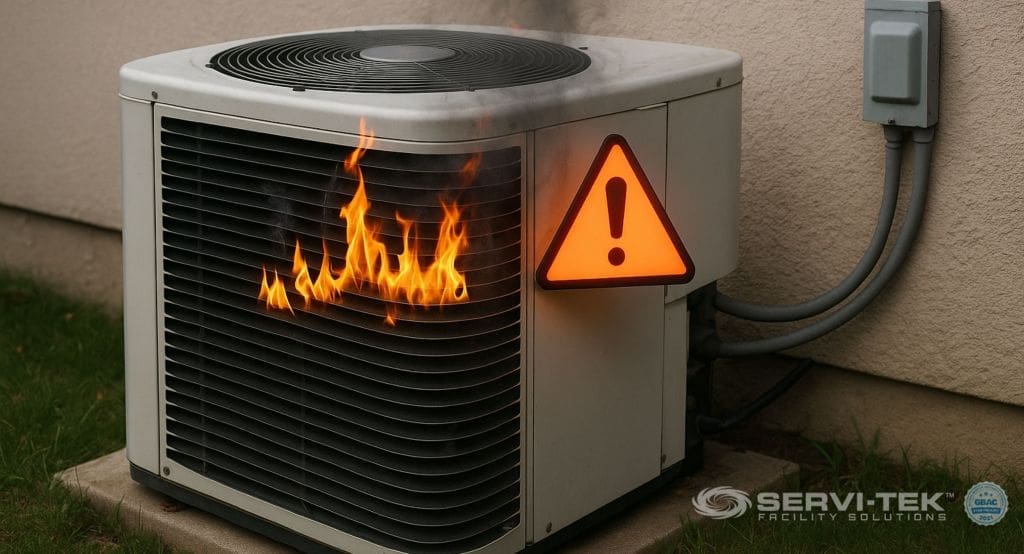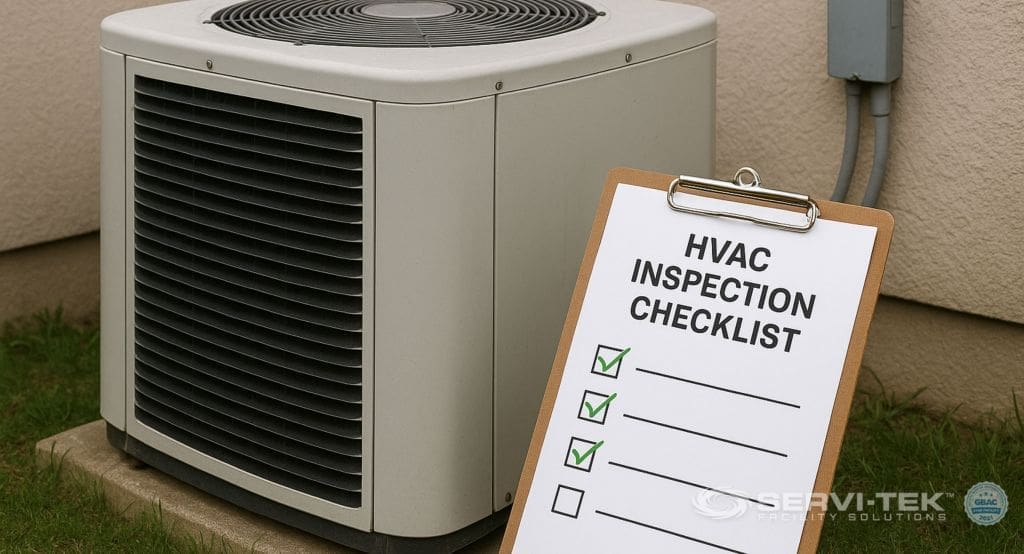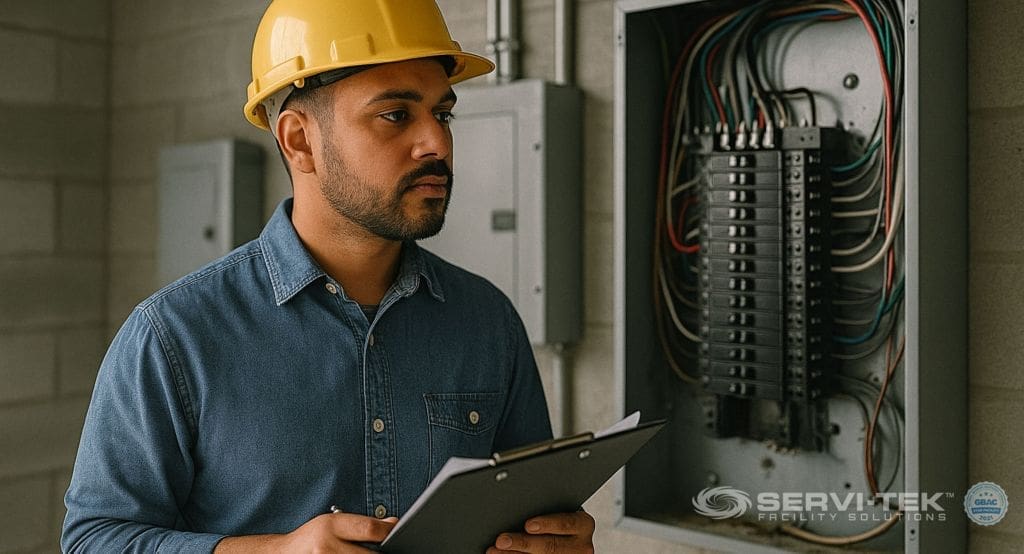The hottest months of the year are behind us — and your HVAC system knows it. After weeks or months of continuous operation, even well-maintained systems begin to show signs of fatigue. Filters clog, motors strain, zones become uneven, and your building becomes vulnerable to unexpected downtime just as you start preparing for fall.
A recent study by the U.S. Department of Energy found that improper HVAC maintenance is associated with up to 40% higher energy consumption in commercial buildings, particularly after prolonged overuse during extreme weather conditions.
This blog breaks down:
- How to spot warning signs your cooling systems are struggling
- What to check during HVAC recovery mode
- How BMS recalibration can improve performance
- Why scheduling a professional HVAC inspection now prevents problems later
1. Warning Signs Your HVAC System Is Overworked

When HVAC systems are pushed to their limits, they start to give off subtle — and not-so-subtle — clues. These warning signs often go unnoticed until they result in tenant complaints or emergency service calls.
Watch for the Following:
- Uneven Cooling – Certain zones remain warm while others are freezing
- Short Cycling – Units turn on and off rapidly, struggling to maintain setpoints
- Loud or Unusual Noises – Grinding, buzzing, or clicking sounds from motors or ducts
- Higher Energy Bills – Sudden spikes in utility costs despite no occupancy changes
- Poor Airflow – Weakened pressure from vents, indicating clogged filters or fan issues
- Condensation or Moisture Buildup – This may point to drainage issues or low refrigerant levels.
If more than one of these is present, your system may be running inefficiently or close to failure.
2. Post-Summer HVAC Inspection Checklist

Now is the time to give your system a deep health check. Focus on these core components:
A. Air Filters
- Inspect for dust, pollen, and debris buildup
- Replace with high-efficiency MERV-13 filters if your system is suitable.
- Log replacement dates and keep spares on-site for quick replacement.
B. Motors and Belts
- Check motor bearings for wear or friction.
- Inspect fan belts for cracks or slack.
- Lubricate moving parts to prevent resistance.
C. Coils and Condensers
- Clean evaporator and condenser coils for optimal heat exchange
- Inspect fins for damage or bending.
- Clear debris from rooftop or external units
D. Refrigerant Levels
- Confirm correct refrigerant charge using pressure readings
- Identify and address any slow leaks.
- Note that undercharged systems may freeze coils or cause poor cooling.
3. Recalibrate Your BMS for Efficiency Gains

Your Building Management System (BMS) is only as intelligent as its last update. After a high-demand summer, it’s essential to recalibrate and optimize settings.
BMS Tune-Up Includes:
- Verifying zone setpoints and scheduling accuracy
- Resetting economizer functions and demand-control ventilation settings
- Identifying overrides that were manually applied during summer emergencies
- Re-syncing sensors to eliminate ghost readings and zone imbalance
According to ASHRAE, proper calibration of BMS sensors can improve system efficiency by 10–15%.
4. Address Tenant Complaints Now — Not in September

Don’t let lingering HVAC issues carry into the fall when weather patterns shift and expectations rise.
Top Complaints That Signal System Strain:
- “My suite is always hot, no matter the thermostat setting.”
- “The air smells stale or musty in the afternoon.”
- “It’s noisy near the mechanical room.”
- “There’s condensation on the window sills again.”
If your engineering team is already aware of these issues, a comprehensive inspection will provide the documentation and scope needed to correct them before they escalate.
5. HVAC Recovery Mode = Better Energy Management

Recovery mode isn’t just about repairs — it’s about strategy. Cooling systems that operate under strain:
- Use more energy to achieve less cooling
- Diminish tenant comfort and productivity.
- Contribute to long-term wear on high-cost equipment.
Post-summer is the ideal time to:
- Rebalance air distribution across zones.
- Reset load schedules for the shoulder season.
- Adjust fan speeds and duct pressures to minimize energy consumption.
- Improve air quality by introducing more outside air if your system supports it.
6. Schedule Your HVAC Inspection Before Fall
Servi-Tek’s facility maintenance teams work with property managers and building owners to:
- Identify HVAC stress symptoms
- Perform visual and diagnostic inspections.
- Recalibrate BMS settings
- Provide a summary of recommendations and energy-saving opportunities.
Whether you manage a multi-tenant office, a university-adjacent property, or a retail facility, our team ensures your HVAC system recovers properly. So you don’t face unexpected problems when the seasons change.
Powerful CTA: Book a Post-Summer HVAC System Inspection Today
Your building’s cooling system worked hard this summer. Don’t let the wear and tear catch you off guard in Q4.
Servi-Tek offers HVAC walk-throughs and system recovery inspections designed to identify inefficiencies, optimize your system’s performance, and help you conclude the year with fewer service calls and lower utility bills.
Schedule your HVAC recovery inspection now



